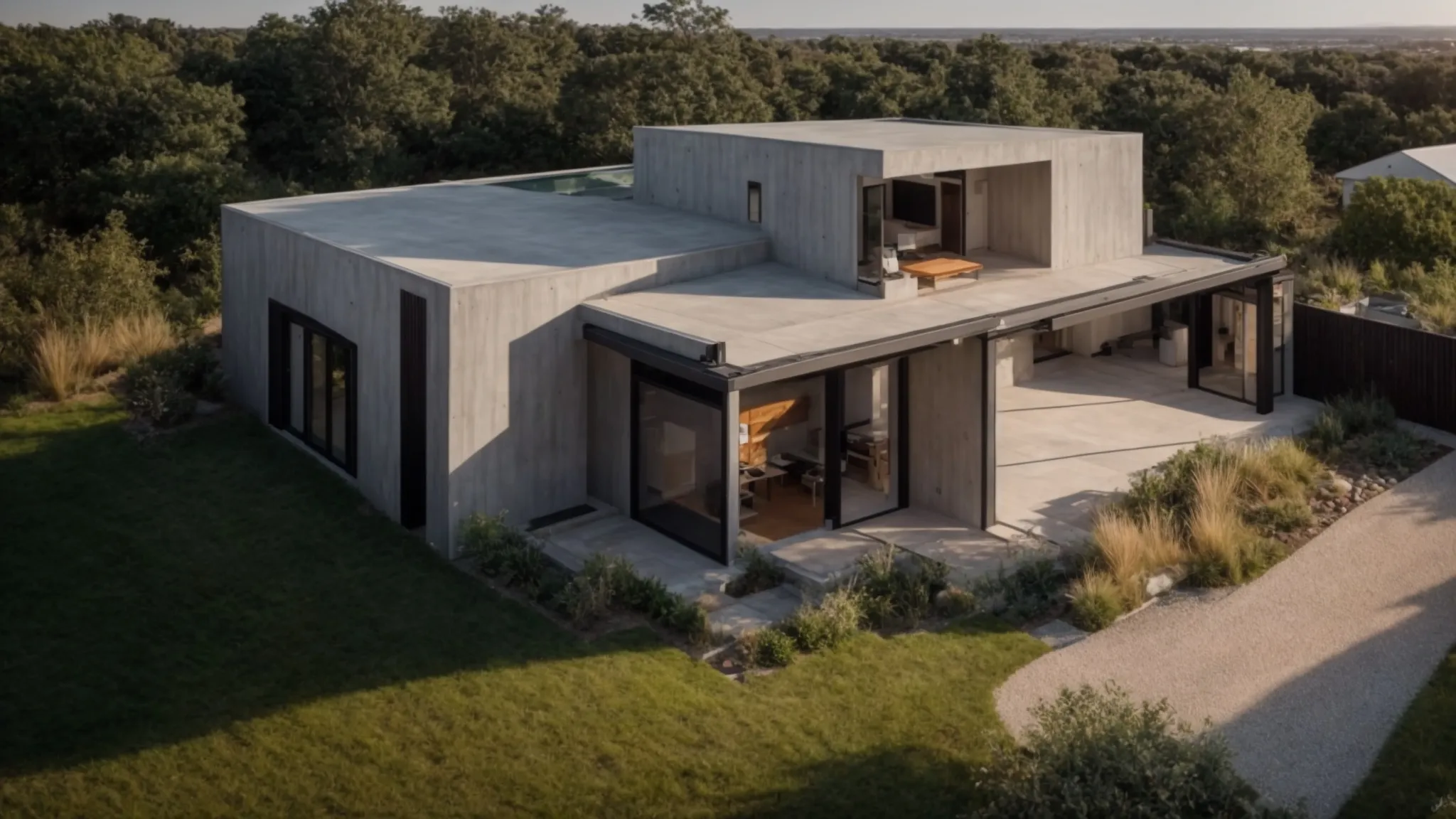BLOG
Woody Allen: A Documentary Part 1

In the world of cinema, few names evoke as much intrigue and discussion as Woody Allen. Known for his unique storytelling, quirky characters, and intellectual humor, Allen has carved a niche for himself in the film industry. But beyond his films lies a complex personality that has fascinated audiences and critics alike. This blog post will explore the first part of the documentary “Woody Allen,” providing insights into the man behind the lens. Whether you’re a lifelong fan or new to his work, this exploration promises to offer a fresh perspective on the enigmatic director.
An Introduction to Woody Allen’s Legacy
Woody Allen’s impact on cinema is undeniable. From classics like “Annie Hall” to thought-provoking pieces like “Midnight in Paris,” his films have left an indelible mark on audiences worldwide. But the documentary “Woody Allen” goes beyond his filmography, offering a glimpse into his life, inspirations, and controversies. In Part 1, viewers are introduced to Allen’s early years, his rise to fame, and the personal experiences that shaped his artistic vision. This section sets the stage for understanding the man who has influenced generations of filmmakers.
Exploring Allen’s Early Years
Born Allan Stewart Konigsberg in Brooklyn, New York, Woody Allen early life was marked by a passion for storytelling. From a young age, he showed a flair for writing, crafting jokes for local newspapers and stand-up comedians. This section of the documentary paints a picture of a young Allen, driven by a desire to entertain and connect with audiences through laughter. It highlights his early influences, from the vibrant streets of New York to the comedic legends he admired, all of which played a role in shaping his unique style.
The Birth of a Filmmaker
Woody Allen’s transition from a comedy writer to a filmmaker marked a turning point in his career. Inspired by European cinema and the works of directors like Ingmar Bergman and Federico Fellini, Allen sought to create films that blended humor with introspection. The documentary captures this evolution, showcasing his early projects and the challenges he faced in bringing his vision to life. Through interviews and archival footage, viewers gain insight into Allen’s creative process and the determination that fueled his success.
The Magic of New York City
A recurring theme in Woody Allen’s films is the city of New York itself. Known for its bustling streets, diverse culture, and iconic landmarks, New York serves as both a backdrop and character in many of Allen’s works. Part 1 of the documentary explores Allen’s deep connection to the city and how it has influenced his storytelling. From the charming streets of Manhattan to the lively jazz clubs of Greenwich Village, Allen’s New York is a place of inspiration and discovery.
Allen’s Unique Storytelling Style
What sets Woody Allen apart from other filmmakers is his distinctive storytelling style. Known for his witty dialogue, existential themes, and often neurotic characters, Allen’s films reflect both his personal experiences and philosophical musings. This section of the documentary dissects Allen’s approach to filmmaking, from his preference for improvisation to his use of narrative techniques that blur the lines between reality and fiction. Through interviews with collaborators and film experts, viewers gain a deeper understanding of the artistry behind Allen’s work.
Collaborations and Influences
Throughout his career, Woody Allen has collaborated with some of cinema’s most talented actors and actresses. From Diane Keaton to Scarlett Johansson, these collaborations have resulted in some of Hollywood’s most memorable performances. Part 1 of the documentary highlights these partnerships, exploring how Allen’s direction brings out the best in his cast. It also delves into the filmmakers and artists who have influenced Allen’s work, revealing the diverse tapestry of inspirations that have shaped his cinematic vision.
Controversies and Criticisms
Despite his success, Woody Allen’s career has not been without controversy. Personal allegations and public disputes have cast a shadow over his legacy, prompting debates about the separation of art and artist. The documentary addresses these controversies head-on, presenting multiple perspectives and allowing viewers to form their own opinions. This section is essential for understanding the complexities of Allen’s public persona and the impact of these issues on his body of work.
The Humor and Philosophy of Allen’s Films
Woody Allen’s films often balance humor with deep philosophical questions, inviting audiences to reflect on life’s absurdities and complexities. Part 1 of the documentary examines this duality, exploring how Allen uses comedy as a tool for introspection and critique. Whether through slapstick humor or biting satire, Allen’s films encourage viewers to laugh while pondering the deeper mysteries of existence. This section highlights some of Allen’s most iconic scenes, illustrating the delicate interplay between comedic timing and existential inquiry.
The Legacy of Woody Allen
Woody Allen’s influence extends beyond his films, impacting the broader cultural landscape and inspiring new generations of storytellers. This section of the documentary reflects on Allen’s legacy, examining his contributions to the art of filmmaking and the enduring relevance of his work. From groundbreaking narrative structures to innovative approaches to character development, Allen’s films continue to resonate with audiences and filmmakers alike.
What Lies Ahead for Allen?
As the documentary concludes Part 1, it raises questions about the future of Woody Allen’s career and the evolving perception of his work. With a prolific filmography and a complex public image, Allen remains a figure of intrigue and debate. This final section offers a glimpse into potential future projects and the ongoing discussions surrounding his legacy. It encourages viewers to consider how Allen’s past will inform his future and what new stories he may yet bring to the screen.
A Call to Explore Further
For those captivated by the world of Woody Allen, Part 1 of this documentary is just the beginning. It invites viewers to explore Allen’s extensive body of work, engage with the themes and characters that define his films, and participate in the ongoing dialogue about his impact on cinema. Whether you’re revisiting classic favorites or discovering new gems, there’s always more to uncover in the enigmatic world of Woody Allen.
In summary, “Woody Allen: A Documentary Part 1” offers a comprehensive overview of the director’s life, artistry, and influence. Through a blend of personal anecdotes, historical context, and expert analysis, the documentary provides a multifaceted portrait of one of cinema’s most intriguing figures. For fans and newcomers alike, it serves as an invitation to explore the rich tapestry of Woody Allen’s work and the enduring legacy of his films.
BLOG
The Ultimate Guide to Ready-To-Move Homes

Ready-to-move (RTM) homes have been gaining traction as a flexible and cost-effective housing solution in today’s real estate market. These homes are constructed off-site and then relocated to a permanent foundation, combining quality with convenience. For those considering the purchase of a new home, RTM homes offer an intriguing alternative to conventional on-site construction. If you’re curious about how these homes might fit into your plans for a dream dwelling, you’ve come to the right place. Keep reading to discover all you need to know about RTM homes and how they could be the ideal choice for you.
Understanding Ready-To-Move Homes: What Are They and How Do They Work?

Ready-to-move homes, or RTM homes, are prefabricated houses built in a factory setting and then transported to a permanent foundation. Since they’re constructed indoors, RTM homes avoid weather delays and often maintain better quality control, adhering to the same codes as traditional builds.
RTM homes Saskatchewan providers offer customizable options, allowing buyers to choose layouts, finishes, and fixtures that suit their style. The streamlined process—from design selection to delivery—makes RTM homes an attractive choice for those looking for a quick and personalized path to homeownership.
The Benefits of Choosing a Ready-To-Move Home Over Traditional Construction
The choice between RTM homes and traditional construction is often influenced by factors like time, cost, and flexibility. RTM homes have a significantly reduced build time, minimizing weather-related setbacks and ensuring a predictable move-in timeline. They are also more cost-efficient due to the efficiency of the manufacturing process and bulk purchasing of materials by the builder. RTM homes often have a fixed price, reducing the risk of cost overruns.
They can be sited in various locations, including rural or remote areas, making them accessible for buyers. Sustainability is also a significant consideration in RTM homes, as they can be designed with eco-friendly materials and energy-efficient systems, leading to long-term savings for homeowners.
Essential Factors to Consider When Purchasing a Ready-To-Move Home
When choosing an RTM home, consider several factors. First, consider the quality of construction, including the builder’s reputation, years in business, and previous projects. Choose a company with warranties and after-sales support. Second, consider design customization, as some companies offer extensive designs. Partner with a builder who can meet or exceed your expectations in creating a personalized living space.
Third, consider location constraints and transport logistics, as delivery costs can vary depending on distance and accessibility. Consider the cost-effectiveness of an RTM home, including foundation preparation, utility connections, land purchase, and transportation. Calculating these upfront will provide a more accurate picture of the total investment involved in purchasing an RTM home.
Financing and Insurance Options for Ready-To-Move Homes

RTM homes are less expensive than custom site-built homes but still require significant financial commitment. Researching mortgage options and lender requirements is crucial, as they may differ from conventional home loans. Proper insurance is essential for RTM homes, as they are constructed off-site and transported to the foundation.
Financial institutions now offer specific packages for modular or RTM homes, and engaging with lending experts can simplify the process. Considering the resale value of RTM homes can provide a clearer understanding of their investment potential. Discussing long-term financial aspects with builder and real estate professionals can help buyers make informed decisions.
Navigating the Delivery and Installation Process for Your Ready-To-Move Home
The delivery and installation of a Ready-To-Move (RTM) home are crucial steps in the homeownership journey. This includes preparing the destination site, constructing a foundation, securing permits, and securing inspections. The transportation process is complex and requires coordination with expert movers, special permits, and road closures.
It’s essential to choose a builder with experience in moving large structures. The installation of the RTM home requires precision and expertise, including placing the home on its foundation, securing it, connecting utilities, and completing interior installations. Builders often offer comprehensive services to ensure a seamless transition from the factory floor to the new home site.
Overall, the journey to owning a ready-to-move home is filled with exciting possibilities and unique advantages. These prefabricated dwellings merge quality, efficiency, customization, and sustainability into a package that’s becoming increasingly attractive to modern homebuyers. By understanding the process, considering key factors, and working with reputable builders, financing entities, and insurance providers, you can embark on a straightforward and fulfilling path to obtaining your dream home.
BLOG
5 Key Documents You’ll Need For A Divorce In Texas

Facing a divorce can feel overwhelming, but understanding the documents you’ll need in Texas can make the process smoother. Whether you’re in Dallas or seeking legal help for divorce in Galveston, knowing what papers to gather is crucial. First, you’ll need a Petition for Divorce. This document initiates the process and outlines your requests. Next, the Respondent’s Answer is essential. It allows the other party to respond to your petition. A Financial Affidavit reveals your assets and debts, ensuring fair distribution. You also need a Child Custody and Support Document if children are involved. This addresses custody arrangements and support needs. Lastly, gather your Marital Settlement Agreement. This outlines property division and resolves other issues. Preparing these documents beforehand can reduce stress and confusion. Seek guidance to ensure you’ve covered everything necessary. With knowledge and preparation, you can navigate your divorce confidently.
Understanding the Petition for Divorce
The Petition for Divorce is your starting point. It sets the stage for your divorce by detailing your requests and expectations. This document covers essential information like identifying details, grounds for divorce, and desired settlements. Make sure you complete it accurately and comprehensively. Mistakes can cause delays and complications. In Texas, you can file your petition in the county where either spouse resides.
The Role of the Respondent’s Answer
The Respondent’s Answer gives your spouse the chance to respond. This document is crucial as it keeps the process moving. Without it, the court may issue a default judgment. Encourage your spouse to file their answer promptly to avoid unnecessary delays. This response should address each point in the Petition for Divorce, including asset division and custody arrangements.
Financial Affidavit Importance
The Financial Affidavit is all about transparency. It requires you to disclose your financial situation, including income, expenses, assets, and debts. This document plays a vital role in ensuring a fair division of property and debts. It also helps in determining spousal and child support. Completing this affidavit accurately is important, as inaccuracies can lead to legal issues.
Child Custody and Support Document Details
If you have children, this document outlines the proposed arrangements for their care and support. It includes custody schedules, decision-making responsibilities, and financial support. Focus on the best interests of the children when crafting this document.
Marital Settlement Agreement Essentials
The Marital Settlement Agreement aims to resolve issues like property division, debts, and alimony. This document requires both parties to agree on the terms. It can prevent lengthy court battles and help both parties move forward. Approach this agreement with a spirit of cooperation for a smoother process.
Comparison of Key Documents
| Document | Purpose | Importance |
| Petition for Divorce | Initiates the divorce process | Starts legal proceedings and sets expectations |
| Respondent’s Answer | Allows response to petition | Prevents default judgment |
| Financial Affidavit | Details financial status | Ensures fair division and support |
| Child Custody and Support Document | Outlines care for children | Focuses on children’s best interests |
| Marital Settlement Agreement | Resolves property and debt issues | Avoids protracted court cases |
Conclusion
Gathering these key documents is a significant step in your divorce journey. Each document serves a specific purpose and plays an important role in the process. Ensure you approach each one with care and accuracy. Seek professional guidance when needed and remain calm throughout. Your attention to detail will help ensure a fair and smooth process.
BLOG
How Social Media Can Impact Your Personal Injury Case

Social media plays a surprising role in your personal injury case, often changing its outcome. You may not realize it, but every post, comment, or photo can affect your case. Insurance companies and lawyers use your online footprint to shape their arguments. For example, a simple post about your daily activities could be used to question your injury’s severity. This is why staying cautious online is crucial. A South Bend personal injury lawyer will tell you that it’s best to assume that anything you post can be public and may become part of your case. The digital world offers no privacy guarantees. It is important to be aware of this reality and act carefully. Follow rules: limit your sharing, review privacy settings, and think twice before posting. Protecting yourself online protects your case and ensures a fair outcome. Your actions today can shape your case tomorrow.
Understanding the Risks
Social media platforms like Facebook, Instagram, and Twitter can seem harmless. Yet, they can create complications in a personal injury case. You might wonder how. Imagine a picture that shows you smiling at a gathering. Insurance companies could use this to argue that you are not suffering. Even positive comments from friends can be a problem. Posts can be misleading, showing only a moment and not the full story. Remember, you cannot control how others interpret your posts.
Privacy Settings Are Not Foolproof
Think privacy settings protect you? That’s not always the case. Even the strictest settings cannot fully shield your information from legal scrutiny. Attorneys can request access to your social media during discovery. Courts may allow this access if the content is relevant. Thus, assume that anything online can become public.
Guidelines for Safe Social Media Use
It’s important to manage your online presence during a personal injury case. Here are three practical tips:
- Pause your activity. Consider taking a break from social media.
- Check your privacy settings. Ensure they are as strict as possible.
- Review your posts. Remove anything that could be used against you.
Comparing Risks and Precautions
| Action | Potential Risk | Precaution |
| Posting daily activities | Misinterpretation of injury severity | Avoid sharing personal updates |
| Sharing photos | Questioning of physical limitations | Limit photo postings |
| Engaging in discussions | Statements used against your claims | Stay away from discussions about your case |
The Role of Legal Advice
Consulting a legal expert is crucial. A lawyer familiar with personal injury cases can offer personalized advice. They understand the nuances of how social media affects your case. Their guidance helps you navigate these tricky waters efficiently. The Nolo’s article on social media legal implications provides more insights into this issue.
Conclusion: Your Caution Matters
Your social media use can sway your personal injury case. Being careful and strategic online helps protect your rights. Follow the guidelines. Consult your lawyer for advice. Understand that what seems minor can have major implications. By doing so, you increase your chances for a fair outcome. Your vigilance today shapes your tomorrow. Act wisely, and protect your future.
-

 BLOG9 months ago
BLOG9 months agoATFBooru: A Hub for Animated Art and Community
-

 CONSTRUCTION7 months ago
CONSTRUCTION7 months agoBuilding a Home Gym in Your Basement (7 Key Renovation Tips)
-

 BLOG9 months ago
BLOG9 months agoFictionmania: A Deep Dive into the World of Transformative Stories
-

 GAMES8 months ago
GAMES8 months agoSnow Rider 3D: Unblocked Tips and Tricks for Gamers
-

 BLOG6 months ago
BLOG6 months agoGIFHQ: A Comprehensive Guide
-

 BUSINESS8 months ago
BUSINESS8 months agoInvestiit.com Tips: A Comprehensive Guide for Smart Investing
-

 BLOG10 months ago
BLOG10 months agoWNFLB: A Deep Dive into Its Impact on Women’s Sports Introduction to the WNFLB
-

 TECH8 months ago
TECH8 months agoMyFastBroker vs. Traditional Brokers: Which is Right for You?
